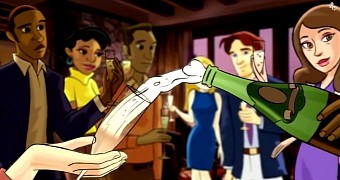True, there is no reason we shouldn't enjoy a glass of champagne whenever, wherever. Still, the fact remains that it's during the holiday season that this beverage suddenly becomes insanely popular.
In case anyone was wondering, those teeny bubbles that make champagne the festive beverage that it is widely considered to be and that tingle our nose and tongue when we enjoy a sip or two are basically carbon dioxide molecules.
As detailed in the video below, these molecules form during the fermentation process, when microorganisms dubbed yeast consume sugar molecules known as glucose and fructose, and cough out ethanol and carbon dioxide.
What's interesting is that, apart from the fact that they are totally fun to look at, the bubbles in champagne help make this beverage more appealing to our sense of taste and smell.
Thus, the bubbles heading towards the surface of a glass of champagne carry with them molecules of flavor and aroma. Having made it out of the glass, these molecules stimulate our senses.
Chemistry facts aside, the one thing that you should do your best to keep in mind, at least until this holiday season is over, is that champagne is most appealing when poured at an angle.
This is because this helps preserve more carbon dioxide and, consequently, helps make sure that plenty more flavor and aroma molecules get carried to our nose and tongue.

 14 DAY TRIAL //
14 DAY TRIAL // 